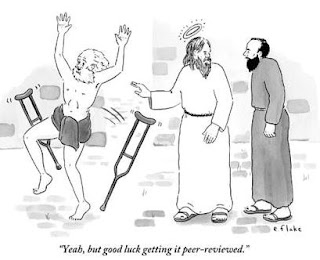"I regard consciousness as fundamental. I regard matter as derivative from consciousness. We cannot get behind consciousness. Everything that we talk about, everything that we regard as existing, postulates consciousness." (Max Planck, who originated the quantum revolution.)
Albert Einstein regarded Planck as almost saint-like: "His work has given one of the most powerful of all impulses to the progress of science. His ideas will be effective as long as physical science lasts."
Planck wrote from the vantage of somebody who thought hard about Black Body Radiation and The Ultraviolet Catastrophe to postulate quantum theory and the quantum leap as explanations. I wouldn't know a quantum leap if I was looking at one, but to this I will only add that "I" don't have to see Consciousness. It is. Consciousness requires no proof. It is obvious and the foundation of all experience. The task of science is fallibility--to prove it isn't. Science can't get outside what gives rise to it
And admitting Consciousness as foundation would overturn the materialist model of science, something that would be mightily resisted. There is no scientist involved in the resistance; it is human nature. On that I will cite Dale Carnegie: "Why prove to a man he is wrong? You can't win an argument because if you lose, you lose it, and if you win, you lose it. You will feel fine. But what about him? You have made him feel inferior, you hurt his pride, insult his intelligence, his judgement, and his self-respect."
Replace "man" with "scientist" and you get the idea. With that in mind, I am curious how the scientific community reacted to Dean Radin's experiment. He hooked freshmen college students to a biometric device to measure their reactions to what was flashed on a computer screen--as examples--either a non-exciting pastoral scene or provocative one like sex or violence.
In measuring reactions from students he found in the freshmen a reaction aligned with the picture before the photo was even selected by the computer. This can be called a presentiment experiment. The reaction is small but repeatable, done around the world with the same results.
Of course, the findings are widely suspect in the scientific community, which is predictable. In that regard, this cartoon is from Radin's book, Supernormal:
In my view, the cartoon is a bit over-the-top as I applaud what science is against--supernatural claims such as that which speculated on the number of angels dancing on the head of a pin--but as hyperbole the cartoon reflects a mind set. The chief fear of scientists is religion and the supernatural itself--and rightly so--but like Dawkins, Harris, and others, they have also become true believers in the scientific model. If it can't be explained, it some day will be or if not it has a materialist basis. To that I cite Hamlet who said, "There are more things between heaven and earth than are dreamt of in your philosophy, Horatio." The phrase might not be an exact quote but it is close. As has been often observed, Dawkins and Harris are themselves fundamentalists and evangelists for atheism. Whether religious or atheist both types are cut from the same cloth.
Hamlet also said "I could be bounded in a nutshell and count myself a king of infinite space." Here is where I test some readers' credulity, but infinite space is indeed what we are. Under intense magnification a table becomes an airy nothing, with things floating as remotely as distant galaxies. Although I write from a nondualist perspective, to make my point I refer you to a classic video, Powers of Ten, which you can watch below.



No comments:
Post a Comment
Note: Only a member of this blog may post a comment.